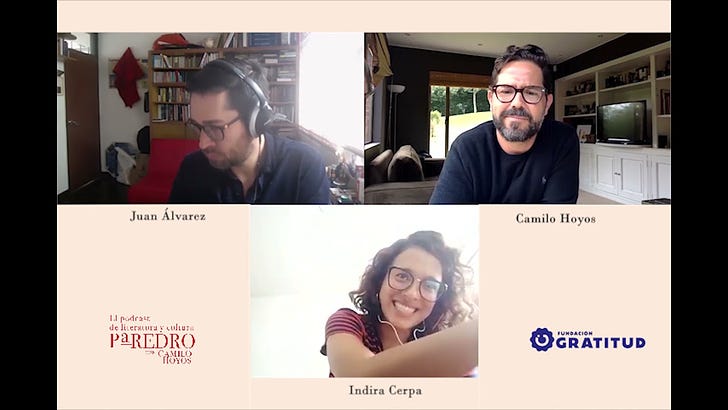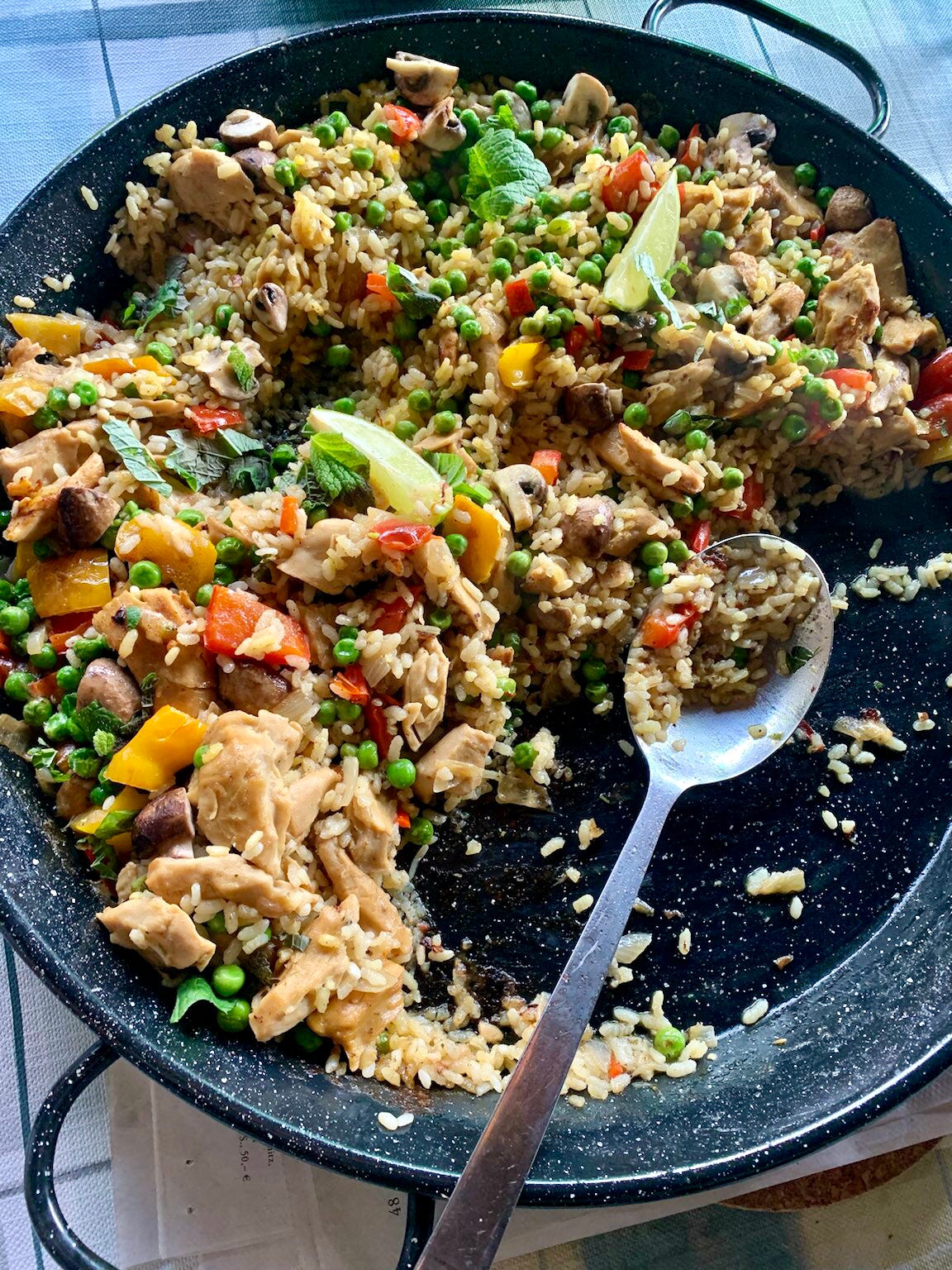Hola. This is Barbara with some cultural topics from the Spanish-speaking world for you. I will present a collection of non-fiction stories to you, written by ex-fighters of the Colombian FARC guerrillas, a documentary series about the Prado museum in Madrid, the program of the Almagro theatre festival in July and a yummy paella recipe.
Sharing nature
The Colombian Instituto Caro y Cuervo (ICC), the country’s Centro de Memoria Paz y Reconciliación and the city government of Bogotá have supported an interesting book project titled Naturaleza común. Relatos de no ficción de excombatientes para la reconciliación (Sharing nature. Non-fiction stories by ex-combatants for reconciliation). The book is the result of a creative process in which 11 ex-members of Colombia’s now defunct FARC write how they experienced their relationship with nature during their militant time, often in very remote areas. The idea behind the book is to think of the environment and the preservation of the country’s rich biodiversity as an invitation for reconciliation to all Colombians, despite their ideological differences. In simple terms: «Hay que dejar el monte limpio» (The forest must be kept clean).
Juan Álvarez, creative director of the project, invited signatories of the peace accord of 2016 to a writing lab to narrate their stories. It was the aim of the different stories to reveal how these guerrilleros learned to coexist with or even depend on Colombian nature, especially in remote and deserted jungle and mountain areas. As Manuela Marín, one of the contributors puts it:
Dicen los expertos que la geografía colombiana es ideal para la guerra, diseñada a la medida de las necesidades de la irregularidad. La guerra es, seguramente, la situación más extrema en la que pueden verse envueltos los seres humanos, así que requiere de escenarios igualmente extremos. Para cualquiera de los bandos enfrentados, el terreno tiene un carácter estratégico; de su conocimiento, manejo y capacidad de adaptarse a él depende en gran parte el éxito o derrota de los ejércitos. (Manuela Marín, «Terrenos, territorios, poblaciones», p. 19)
In English: «Experts say that Colombia's geography is ideal for war, designed to suit the demands of unlawfulness. War is surely the most extreme situation in which human beings can be involved, so it requires equally extreme settings. For any of the fighting groups, the ground has a strategic character; the success or defeat of the troops depend largely on their knowledge, management and ability to adapt to it.» (translation mine, with a little help from DeepL)
The book is freely accessible at no cost and can be downloaded from the webpage of the ICC ( you have to shortly register with your email).
If you wish to learn more about the creative process of the project, listen to this engaging conversation, in which Camilo Hoyos Gómez talks to Juan Álvarez and Indira Cerpa, who contributes to the book with her story «Mutatis mutandis».
If you prefer to listen to the podcast on Spotify, you can do so as well:
The ex-combatants of lower rank have a very hard time to re-find their place in a society that not only rejects them because of their militant past, but also because this society has never offered them much worthwhile in the first place. Many opponents of the peace accord have suffered from the FARC’s war atrocities and narcoterrorism and will find it difficult to pardon them. However, to their own benefit, they could support cultural efforts like these that may help avoid a repetition of the violence. A good part of the social leaders, who were murdered in the last years because the government was not able to protect them, were ex-FARC. At this crucial point in time, it is a little sign of hope to help re-integrate those ex-combatants who adhere to the special jurisdiction of the accord. But let’s finish this book presentation with an authentic statement of how the future might look like:
Actualmente tengo un cultivo de flor de Jamaica, y así le hago un bien a la gente con un producto bueno, me lo hago a mí, porque tengo un trabajo que construí yo misma, y se lo hago a mi familia porque tengo un lugar seguro para ellos, una economía algo estable y esperanza en el futuro. Eso me entusiasma muchísimo. Saber que ahora todo es diferente y estos árboles no tienen que arropar mi miedo o ser testigos de mi tristeza en medio de las armas. (Lidia Alape, «Hojarasca y pólvora», p. 30)
Translation (again mine): I have been cultivating a crop of hibiscus , and so I do good to people with a good product. It’s also good for me because I have a job, that I created myself, and it is good for my family, because I have a safe place for them, a relatively stable economy and hope for the future. I’m very excited about this, knowing that now everything is different and these trees don't have to shelter my fear or witness my sadness in the midst of a combat.
A night at the museum
Back in November 1819, the Prado museum in Madrid, officially «el Museo Nacional del Prado», opened its door to the public for the very first time. It hosts one of the finest collections of European art with works by Bosch, Titian, Velásquez, El Greco or Goya. The collection goes back to Carlos V, Holy Roman Emperor, and Carlos I, king of Spain, respectively who loved Titian so much that he wanted to have his paintings and the painter himself around him as much as possible.
The Prado museum is one of the most-visited museums of the world, but I guess currently you can enter without queuing because most of us still refrain from travelling abroad. You can still visit the museum. The Prado museum is to my knowledge one of the museum that really try to share their treasures with those you cannot come to Madrid. Today, I don’t want to share one of their projects, however, but one that was developed by public Spanish TV to mark the bicentenary of the museum in 2019. In four episodes, TV host Ramón Gener guides us through the vast collection of Spanish kings and queens who is now owned by the public.
On this page, you can find all four episodes, available to everybody, also outside of Spain:
Museo del gusto real (Museum of Royal taste)
Museo de pintores (Museum of painters)
Museo de símbolos (Museum of symbols), and
Museo de reflejos (Museum of reflections).
The frame story of A night at the museum is sometimes a bit silly, but also self-ironic enough to avoid any idea of pompousness. All in all, the documentary offers incredible insights into the history of art and the history of Spain.
Almagro is taking the stage again
Assuming we will keep the numbers of the pandemic under control, the famous Festival de Almagro will recover its original duration, all its theatre spaces and its international character this summer. The Festival of Almagro is considered the most important of its kind dedicated to the theatre of the sixteenth and seventeenth centuries in the Hispanic world, known as Golden Age. The stages in this small town in Castilla-La Mancha are spectacular.
This year’s festival will take place from July 1st to 25th. Portugal has been invited as guest country, Navarre as guest autonomous region. Julieta Serrano will receive the Corral de Comedias Award (Premio Corral de Comedias del Festival de Almagro) during the opening ceremony on July 1st. This prize has been awarded since 2005 to national or international figures with a relevant artistic career in the world of the performing arts in different fields or specialities. You may have seen Serrano most recently as the elderly Jacinta in Almodóvar’s Dolor y gloria (Pain and glory).
What she says about her relationship with classical Spanish theatre is very touching, listen:


Fresh from the press, here’s the link to the complete program: https://www.festivaldealmagro.com/programacion/
One more thing: Summertime is paella time
My sister-in-law came for a visit, the first one since the pandemic broke out. Due to the current mixed weather situation, we bid the winter farewell with a last cheese fondue on Saturday and welcomed summer with the first paella over an open flame on Sunday night. We more or less followed the plant-based dad’s recipe, just replacing the seitan ingredients with planted chicken, which I had marinated for 3 hours with olive oil, lemon juice, a chili pepper, an onion and garlic. Very delicious!
That’s all for this time. Let me know your feedback and suggestions. I’ll get back to you in two weeks at the latest.



